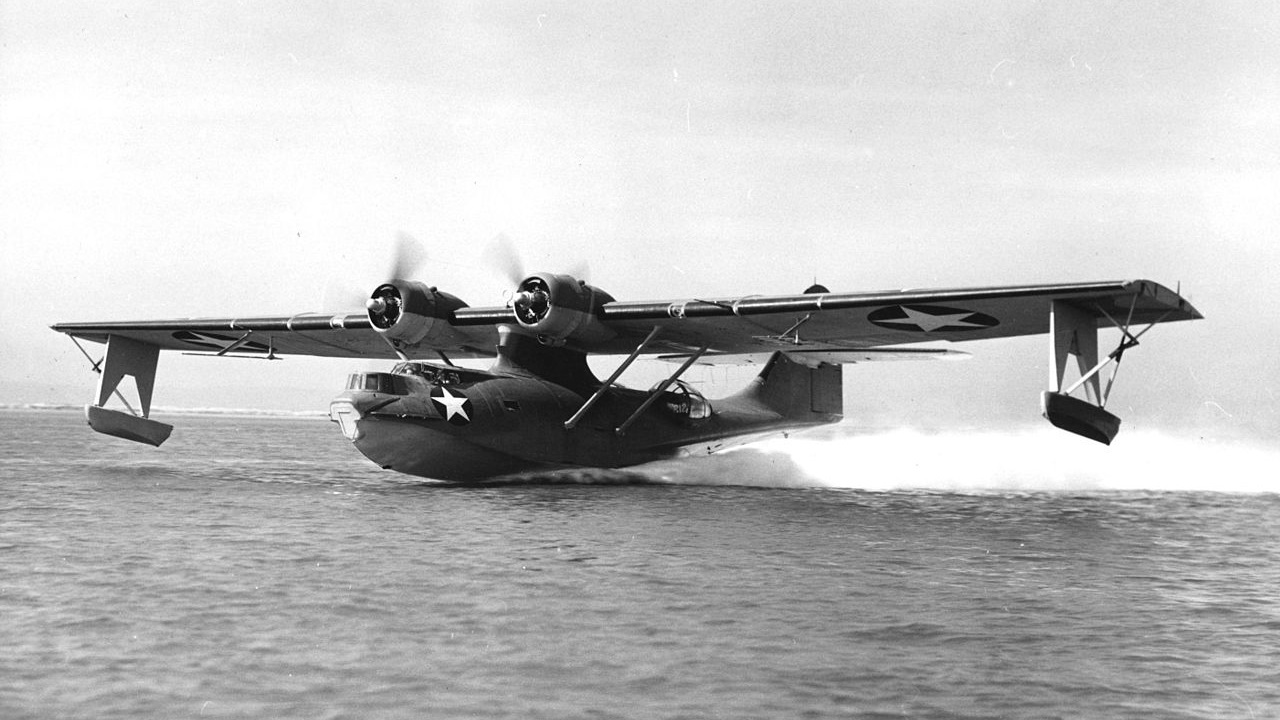
America’s PBY Catalina Flying Boat Might Have Saved the US Navy at Midway
The Catalina’s actions at Midway not only redeemed its reputation after early war setbacks, but also exemplified how reconnaissance could dictate naval engagements.
Flying high above the cerulean skies of the Pacific Ocean, the United States Navy’s Consolidated PBY Catalina was essential for American naval operations against the Empire of Japan during the Second World War.
A flying boat developed in the 1930s that was designed primarily for long-range maritime patrol and reconnaissance, the Catalina played a critical role in various battlefields of World War II. Its most important, though, may have been in helping to spot the Imperial Japanese Navy’s aircraft carriers at the Battle of Midway.
Specifically designed for the Navy’s requirement of being able to conduct long-distance operations in the Pacific, the Consolidated PBY Catalina’s XP3Y-1 prototype took its maiden flight on March 21, 1935. The prototype featured a parasol-mounted wing with external bracing, retractable wingtip floats for stability on water, and a two-step hull for improved hydrodynamics.
The PBY Catalina Seaboat’s Specs
Constructed largely from stressed-skin aluminum, the PBY Catalina was powered by two Pratt & Whitney R-1830 Twin Wasp radial engines, initially delivering 825 horsepower each, with later models upgraded to 1,200 horsepower. Armament included four .30-inch Browning machine guns and up to 2,000 pounds of bombs or depth charges, making it suitable for offensive roles beyond mere scouting.
The PBY-5A variant, an amphibious version with retractable landing gear, exemplified the aircraft’s specifications. A crew of eight—including pilots, gunners, and navigators—operated the flying boat. It had a maximum speed of 196 miles per hour, a cruising speed of 125 mph, and an incredible range of 2,520 miles. This range, combined with its ability to land on water, allowed the Catalina to operate far from land-based support, earning it nicknames, such as the “Cat” among US forces and “Black Cat” for night operations.
Over 3,300 Catalinas were produced throughout the war years, making it the most numerous flying boat of its era. Specialized variants like the PBN-1 Nomad incorporated enhancements, like extended fuel capacity for even greater endurance. These design features—durability, versatility, and long loiter time—made the PBY indispensable for maritime warfare. Indeed, they very well may have helped the Americans win the war in the Pacific. But PBYs served in nearly every major operational theater, demonstrating its multifaceted capabilities.
In the Atlantic, the Catalina was a key player in the war against German U-Boats, destroying around 40 of the submarines through aerial patrols and convoy escorts. Notable actions included RAF Coastal Command Catalina locating the German battleship Bismarck in May 1941, which led to its sinking, and heroic engagements earning Victoria Crosses for pilots like Flying Officer John Cruickshank and Flight Lieutenant David Hornell in 1944.
Meanwhile, in the Pacific, the aircraft’s roles expanded to include bombing raids—as seen in December 1941 shortly after the Japanese surprise attack against Pearl Harbor, when PBY Catalina Patrol Squadron 101 attacked Japanese shipping at Jolo Island, despite heavy losses.
The Catalina’s Heroic Service at Midway
From June 4-7, 1942, the US Navy and the Japanese Navy fought the Battle of Midway—marking a crucial turning point in the Pacific War, where American intelligence and naval aviation halted Japan’s imperial expansion. The PBY Catalina’s reconnaissance efforts were foundational to this victory, providing the first sightings of the Japanese fleet and enabling US commanders to position their forces effectively.
On June 3, 1942, at approximately 9am (local time), Ensign Jewell Harmon “Jack” Reid, piloting a PBY-5A Catalina from Patrol Squadron 44 (VP-44), made initial contact with elements of the Japanese fleet—700 nautical miles (805 statute miles) west of Midway Island. Reid’s crew spotted Japanese Admiral Raizo Tanaka’s Midway Operation Force, consisting of one light cruiser and 12 transports carrying 5,000 soldiers, 11 destroyers, two seaplane tenders, one fleet oiler, and four patrol boats.
Initially mistaken for the “main body” of the Japanese fleet, this sighting was radioed back to Midway, alerting US forces to the impending invasion. That night, four Catalinas from Midway conducted a daring torpedo attack on the occupation force, damaging the tanker Akebono Maru in a surprise raid by VP-44.
The following morning, on June 4, another Catalina Patrol Squadron 23 (VP-23), located two of Admiral Chüchi Nagumo’s aircraft carriers, part of the Japanese First Air Fleet. This intelligence was relayed to Admiral Jack Fletcher aboard the USS Yorktown, allowing US carrier-based aircraft to launch strikes that successfully sank four Japanese carriers (Akagi, Kaga, Soryu, and Hiryu).
In total, 32 PBYs were deployed for scouting during the battle, highlighting their major strengths in identifying enemy vessels and performing daring hit-and-run surprise attacks. After the battle, Catalinas conducted air-sea rescue operations for 10 days, recovering downed airmen and sailors and further underscoring their usefulness.
Without the PBY’s early detections, the Japanese might have achieved surprise, potentially altering the battle’s outcome. The Catalina’s actions at Midway not only redeemed its reputation after early war setbacks, but also exemplified how reconnaissance could dictate naval engagements.
Today, the Catalina’s legacy endures in aviation history, reminding how technological innovation and human ingenuity can turn the tide of war. Though production ceased after the war, surviving examples in museums continue to honor its contribution to freedom.
About the Author: Brandon J. Weichert
Brandon J. Weichert, a Senior National Security Editor at The National Interest as well as a contributor at Popular Mechanics, who consults regularly with various government institutions and private organizations on geopolitical issues. Weichert’s writings have appeared in multiple publications, including the Washington Times, National Review, The American Spectator, MSN, the Asia Times, and countless others. His books include Winning Space: How America Remains a Superpower, Biohacked: China’s Race to Control Life, and The Shadow War: Iran’s Quest for Supremacy. His newest book, A Disaster of Our Own Making: How the West Lost Ukraine is available for purchase wherever books are sold. He can be followed via Twitter @WeTheBrandon.
Image: Shutterstock.
The post America’s PBY Catalina Flying Boat Might Have Saved the US Navy at Midway appeared first on The National Interest.
















